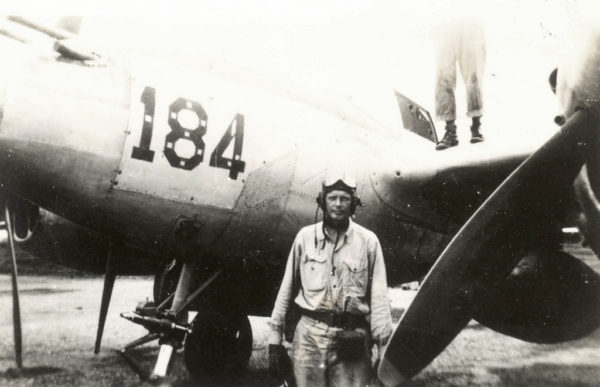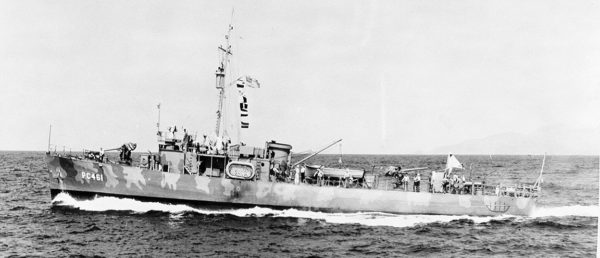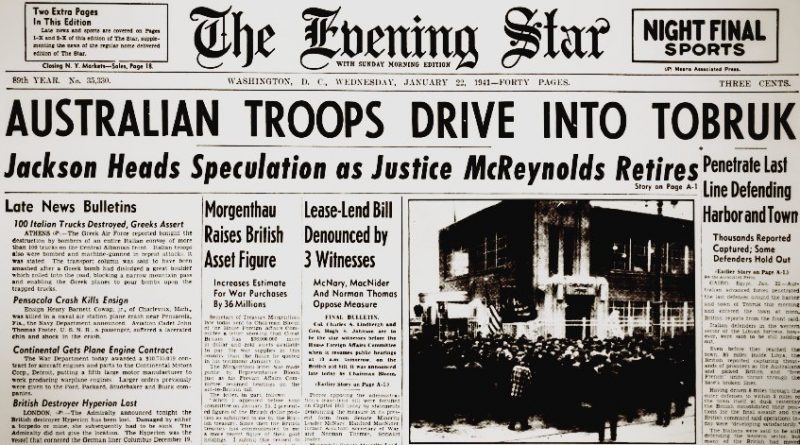World War II Chronicle: January 22, 1941
Click here to read TODAY’S NEWSPAPER
Page 10 recounts the recent passing of Col. Frederick E. Humphreys, the first soldier to fly in a heavier-than-air craft. He accomplished this after three hours of instruction from Wilbur Wright on October 26, 1909, flying 20-30 feet over College Park, Md…. Sports section begins on page 16…
Congress is debating the Lend-Lease Act, and two star witnesses will appear tomorrow: Col. Charles A. Lindbergh and Gen. Hugh S. Johnson. Lindbergh was perhaps the world’s most-famous person at the time and a spokesman for the isolationist America First Committee. Just two years ago Gen. Henry H. “Hap” Arnold recalled Lindbergh to active service for four months to evaluate the United States’ readiness for war, but in April 1941, a disgusted Lindbergh will resign his commission after Pres. Roosevelt calls him a “defeatist and appeaser.”

Lindbergh tries to rejoin the Air Corps after Pearl Harbor, but is blocked by Roosevelt. In hindsight, having Lindbergh serving in uniform would likely have shortened the war, since his expertise could have profoundly impacted our aerial tactics. He did serve as a consultant to the aircraft manufacturing industry before flying 50 combat missions in the Pacific Theater — as a civilian. Lindbergh found a way for Marine F4U Corsair pilots to double their bomb load and came up with a procedure to extend the range of the P-38 Lightning. And he managed to shoot down an enemy plane while escorting bombers over Indonesia. He is eventually reinstated as a brigadier general in the Air Force Reserve by Pres. Dwight Eisenhower.
Johnson, the second star witness, was the youngest man to pin on a general’s star since the Civil War, going on to join Roosevelt’s “Brain Trust,” and was TIME magazine’s 1933 “Man of the Year” during his tenure as chief of the National Recovery Administration. Johnson left the administration when FDR wanted to pack the Supreme Court and began backing Republican candidates.
Sub chasers
The $909 million pricetag for new sub chasers and expansion of shipbuilding and ordnance facilities would be the equivalent of $16 billion in 2021 dollars. Sub chasers were 110-foot-long wooden vessels, longer and substantially slower than the famous “PT” boats. These ships could be produced in as little as 60 days and were our first line of defense for the early days of World War II when German U-boats menaced American shores. While many World War I-era sub chasers were still in use, shipbuilders added 400 more to the “Splinter Fleet” by war’s end, many of which were sent to allies via Lend-Lease.

A sub chaser typically traveled at 12 knots (capable of 20 knots at flank speed) and was crewed by around three officers and 25 men (SC-497 class). Their low profile made it very difficult for enemy submarines to detect with their periscope, but if spotted, the Germans could keep out of range and attack the American vessel with their 4″ gun. Their primary weapon was the depth charge gun, but they also carried a 3″/23-cal. deck gun, and 50-cal. or 40-mm. guns.
While they didn’t sink many — if any — enemy submarines, they certainly saved many ships from menacing U-boats. And sub chasers were used for numerous support roles throughout the war, proving highly useful during amphibious operations, minesweeping in coastal areas, and rescuing downed pilots.
The march of time
Page three notes the passing of Mrs. Amney Thompson, a 95-year-old widow of a Civil War veteran. The women who marry the young soldiers, sailors, and Marines we find in the paper from 1941 would be just as old today, given that we are just as far removed from the Second World War as they were from the Civil War.
And while we are considering timelines, it is just as interesting to note that to a reader in 1941, the First World War would have been about as long ago to them as the beginning of the War on Terror is to us in 2021. Page seven shows pictures of soldiers jumping out of airplanes; parachute infantry was merely a concept the American military was exploring. But military aviation as a whole was a brand-new concept during World War I. And considering mobility, infantry soldiers had moved the same 1 or 2 miles per hour in 1918 — by marching — as they had throughout all of human history. But by 1941, a truck or airplane could move them well over 100 miles in a day.
Motorized vehicles — something we in the 21st Century take completely for granted — were also new battlefield technology at the dawn of the 20th Century. George S. Patton Jr. commanded the first mechanized attack in American military history, and he is still serving. Patton recently pinned on his first star and is acting commander of the 2nd Armored Division. Comparing our modern military to the forces we sent into Afghanistan 20 years ago, an untrained eye probably couldn’t spot many significant differences. Considering aviation, the F-14 Tomcat has since retired, the munitions are smarter and more precise, and avionics packages like navigation and targeting systems are improved.
Going back even further, our equipment doesn’t look that much different than it did during Operation DESERT STORM 30 years ago. And someone from 1941 probably wouldn’t be able to tell the difference between our modern military and that of 50 years ago, during the Vietnam War. F-14s patrolled the skies as we left the American Embassy. We still use C-130s, KC-135s, and B-52s. M16s have lost their carrying handle and triangular foregrip, but are still issued. The M14 has made a comeback, certain sniper rifle platforms haven’t gone anywhere, and some of our forces still carry the same pistol Lt. Patton did over 100 years ago: the beloved M1911 Colt .45.
The Spanish-American War was more recent to the 1941 reader than Vietnam is to us, but I don’t think Teddy Roosevelt and his Rough Riders would have a fighting chance against Gen. Patton’s Third Army, supported by planes and tanks, and supplied by trucks.
The things we have in 2021 are basically an improved version of what we had in 2001. And the pace of our progress since Vietnam pales in comparison to the progress between the two world wars. A fighter or bomber from 1941 was light years ahead of its counterpart from 1918. In fact, Japan’s Mitsubishi A6M “Zero” fighter dominated the skies in 1941, but mere months later were almost completely ineffective against new and improved American aircraft.
How would our modern military and Navy compare if we fought ourselves from World War II? It’s hard to say, but that would be a fascinating topic to discuss in detail in a future post.
Simply put, I would argue that despite all our technological improvements, our over-reliance on technology — and the comfort our society enjoys as a result — would not only offset our advantages, but becomes a hindrance. We can identify and engage targets with modern systems long before our theoretical WWII-era opponent could, but that assumes our technology is working. Could we function without satellite guidance, navigation, and communication? Probably not for a while. Could an enemy that didn’t rely on satellites (that is until their generation made them), instead using low-tech equipment like signal flags and a compass, and with the grit and tenacity that comes from a hard life on the farm or in the mines, beat us in the meantime? I would argue that it’s entirely likely we would lose. Especially when you consider all the logistics, like how 1940s-era fighters could take off from a places that would annihilate a modern pampered fighter’s landing gear. An old fighter in the air is better than a new one on the ground.
But what about 1940s tech compared to 1890s tech? Yes, compared to the Rough Riders, Patton’s tankers had some incredible technology. But while they would have to devote resources to moving fuel, oil, spare parts, etc., the pros of rapid mobility easily outweigh the cons of the logistics it demands. Plus, 1940s technology wasn’t vulnerable like ours is. For example, you can’t “spoof” a ship’s GPS (making it appear they are somewhere different than they are) when your opponent uses a sextant. You can destroy or disable a navigation satellite, but you can steal all of your opponent’s maps and compasses. An electromagnetic pulse (EMP) certainly wouldn’t be the end of the world for the 1940s soldier (if they even noticed), but when most of what we use has circuitry, it would spell defeat for us. And before you consider that an EMP wasn’t a weapon in the 1940s, know it was your opponent who invented atomic weapons; and instead of computers, they had cigarettes and slide rules. While our Pentagon is devoting assets to diversity studies and worrying about which pronouns to use, their Pentagon will be ordering so many Purple Hearts that we will still be using them decades later, because that’s the cost they are willing to pay to achieve victory.
And regarding the passing of the first American military aviator, Brig. Gen. Frederick Erastus Humphreys: In 1909, 2nd Lt. Humphreys, on loan from the Corps of Engineers, became the first Army aviator to solo in a heavier-than-air craft. Wilbur Wright gave Humphreys three hours of instruction in the Wright Flyer on Oct.26, 1909 at College Park, Md. He will return to his old unit once the Signal Corps’ Aeronautical Division’s only plane crashes just two weeks later. The paper has a good account of Humphrey’s solo, as well as an interesting piece by Charles W. Gilmore about modern infantrymen “riding to work” in the column to the right.
Evening star. (Washington, D.C.), 22 January 1941. Chronicling America: Historic American Newspapers. Lib. of Congress.
https://chroniclingamerica.loc.gov/lccn/sn83045462/1941-01-22/ed-1/
